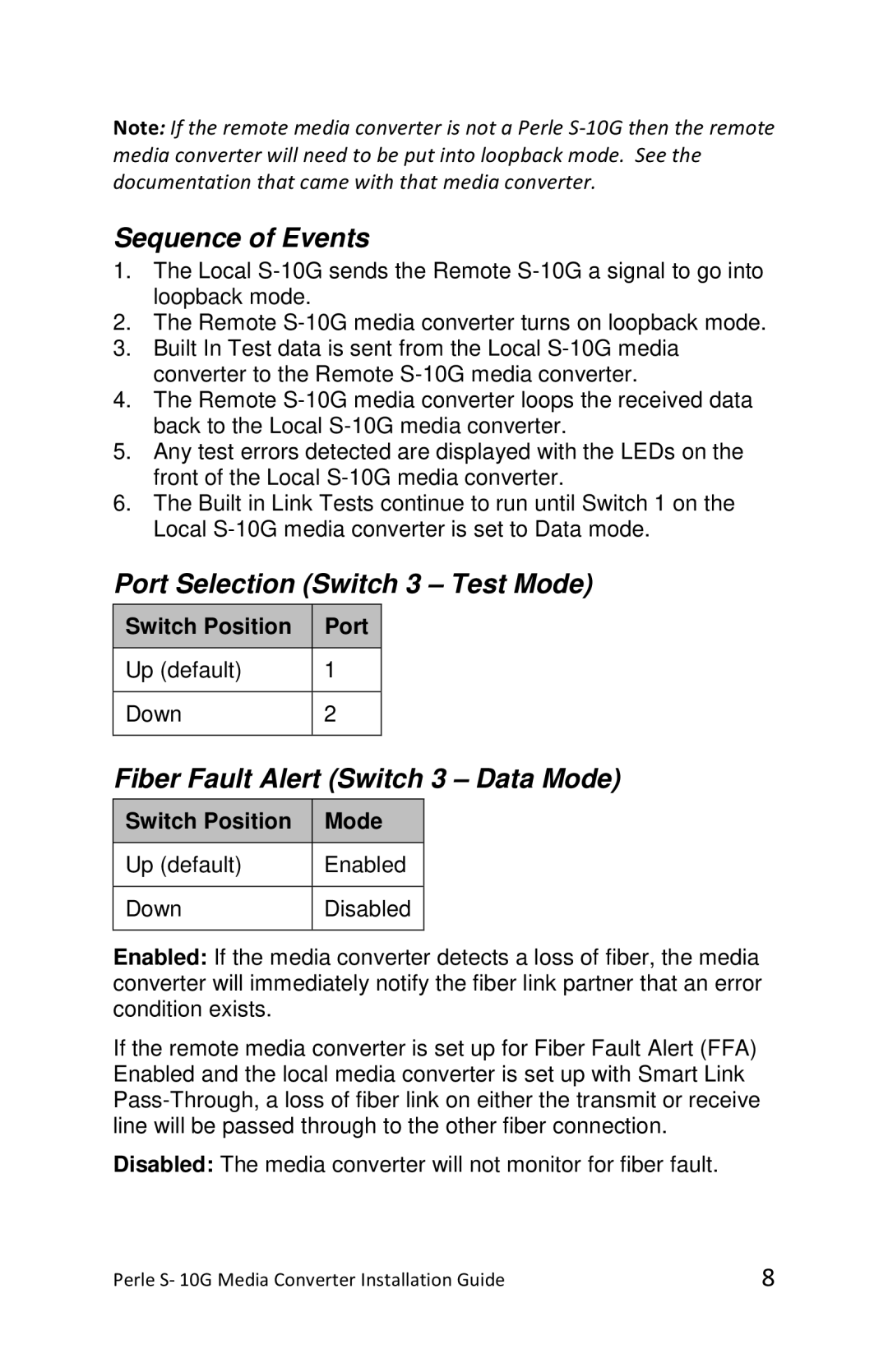S-10G-STS, S-10G-XTXH, S-10G-XTS, S-10G-XTX, S-10G-XTSH specifications
Perle Systems is renowned for its high-quality network connectivity solutions, and their line of S-10G fiber media converters reflects this commitment to excellence. The S-10G series includes several models: S-10G-XTXH, S-10G-XTX, S-10G-STS, S-10G-XTS, and S-10G-XTSH. Each model is designed with unique features to meet the demands of modern network infrastructures, providing robust performance for transitioning between copper and fiber networking environments.One of the standout features of the S-10G series is their support for multi-rate SFP+ transceivers. This flexibility allows users to configure the devices to support various network applications and distances based on their specific needs. The S-10G-XTXH, for example, includes both extended temperature ratings and high-power output options, making it ideal for use in harsh environments where reliable performance is critical.
Another notable aspect of the S-10G series is the advanced Layer 2 and Layer 3 capabilities. These converters support various protocols, ensuring seamless integration into existing network infrastructures. The models are designed for automatic MDI/MDI-X detection, which simplifies the setup process by eliminating the need for crossover cables.
The devices are equipped with Power over Ethernet (PoE) capabilities, allowing for the transmission of power along with data through the same cable. This feature is particularly beneficial for powering remote devices such as IP cameras or wireless access points without the need for additional power supplies. The S-10G-XTSH, for instance, provides enhanced features such as an integrated failover relay, ensuring ongoing network connectivity even in the event of a power failure.
Security is also a priority with these converters. They come with robust data integrity verification methods including support for VLAN tagging and IEEE 802.1Q, ensuring that data remains secure as it transitions between different media types. Additionally, the S-10G series boasts high resiliency and reliability, with redundant power supply options, which is critical for mission-critical applications.
With a combination of high-speed performance, versatile connectivity options, and essential features tailored for modern network demands, Perle Systems' S-10G series converters are invaluable tools for enhancing network efficiency and resilience. Whether deployed in enterprises, data centers, or remote locations, these devices are engineered to provide seamless connectivity, making them a preferred choice for system integrators and network administrators alike.
